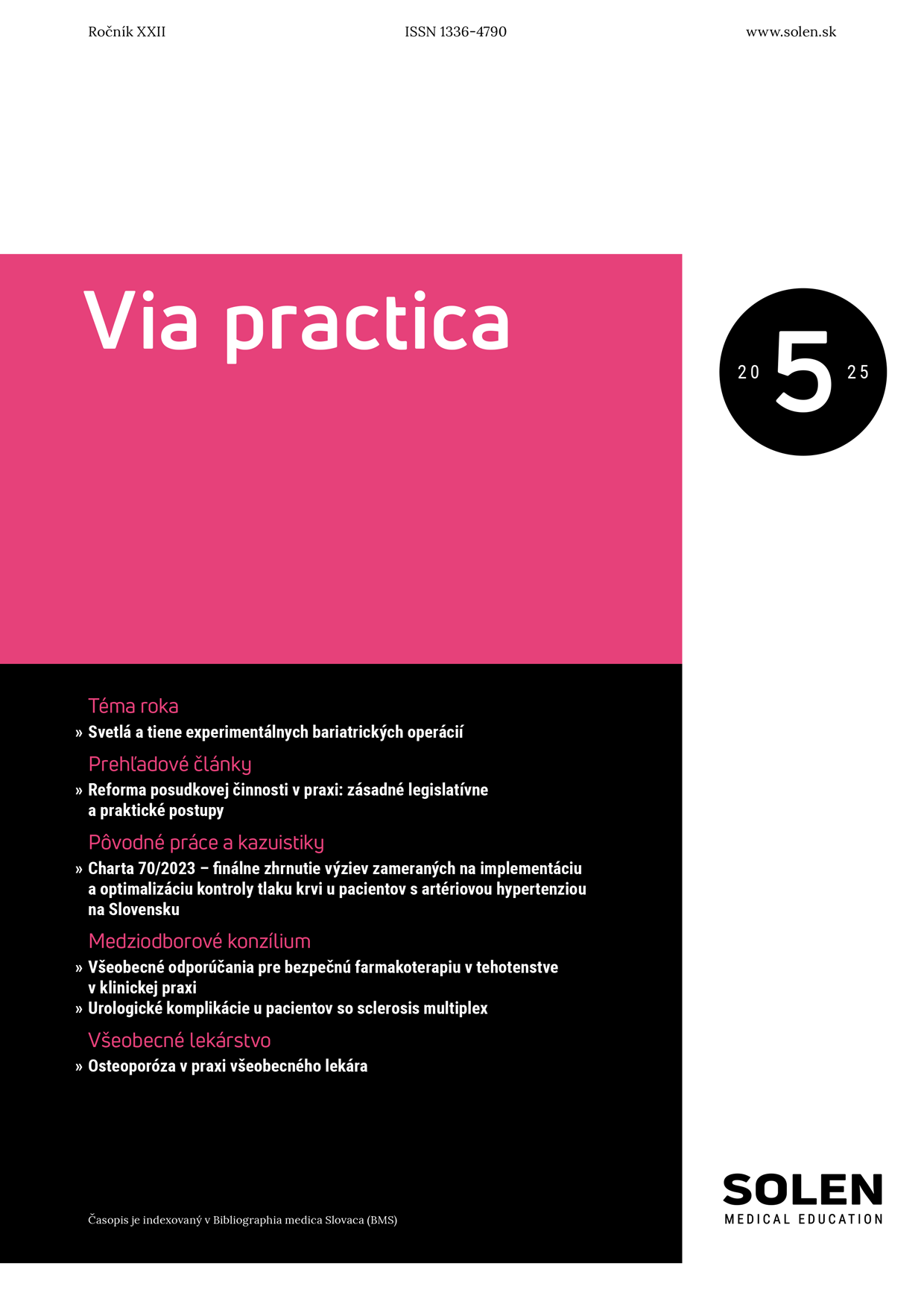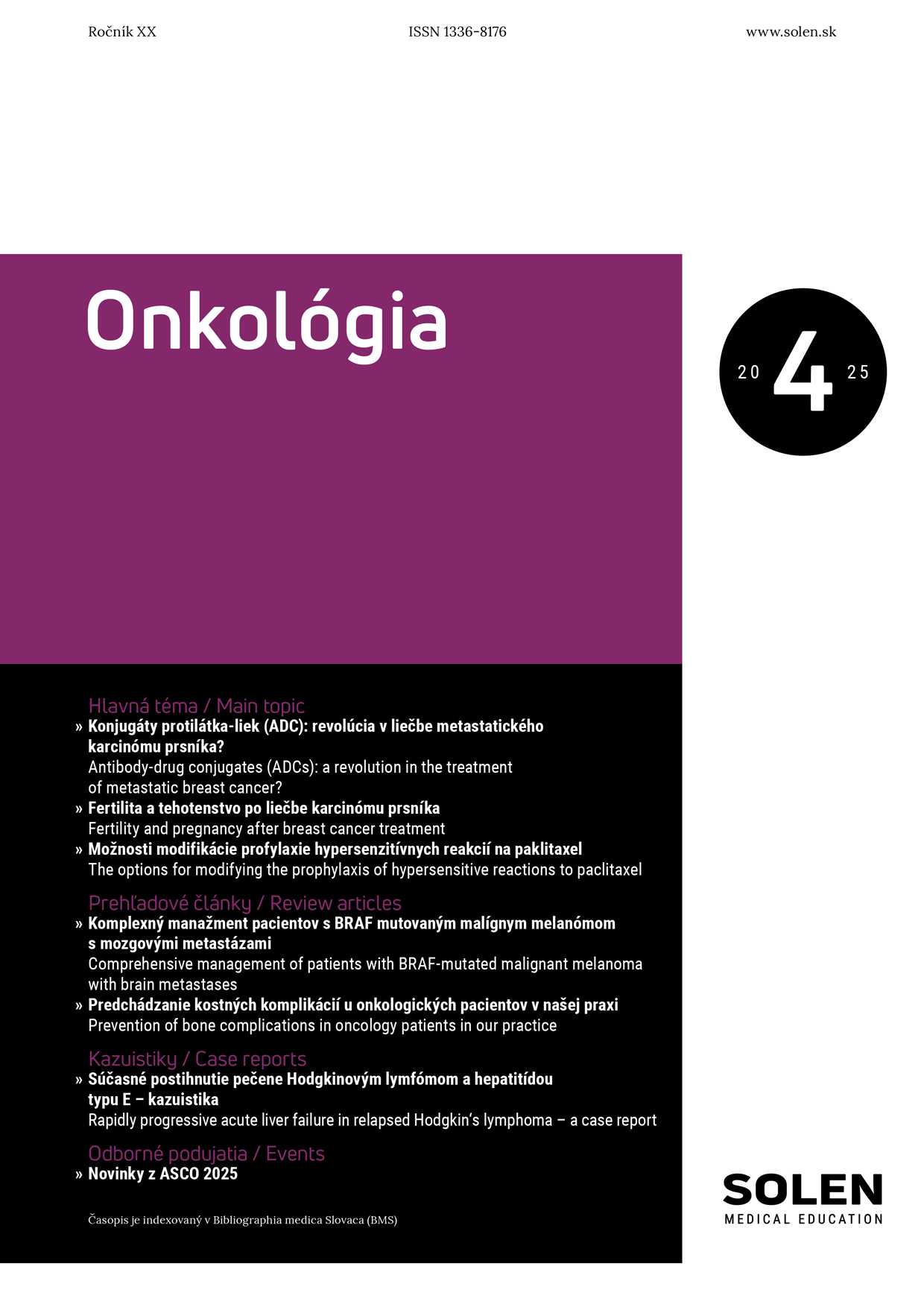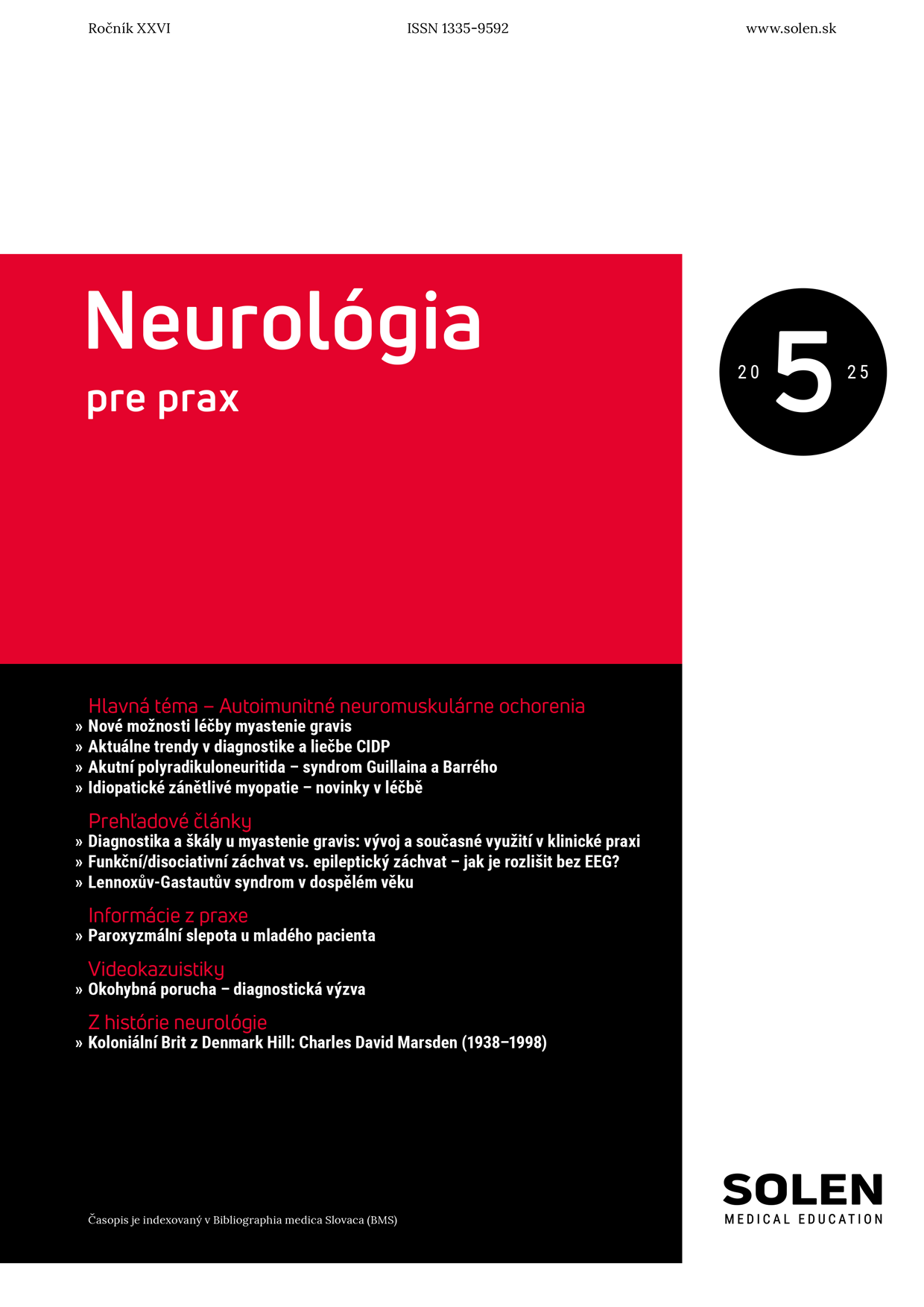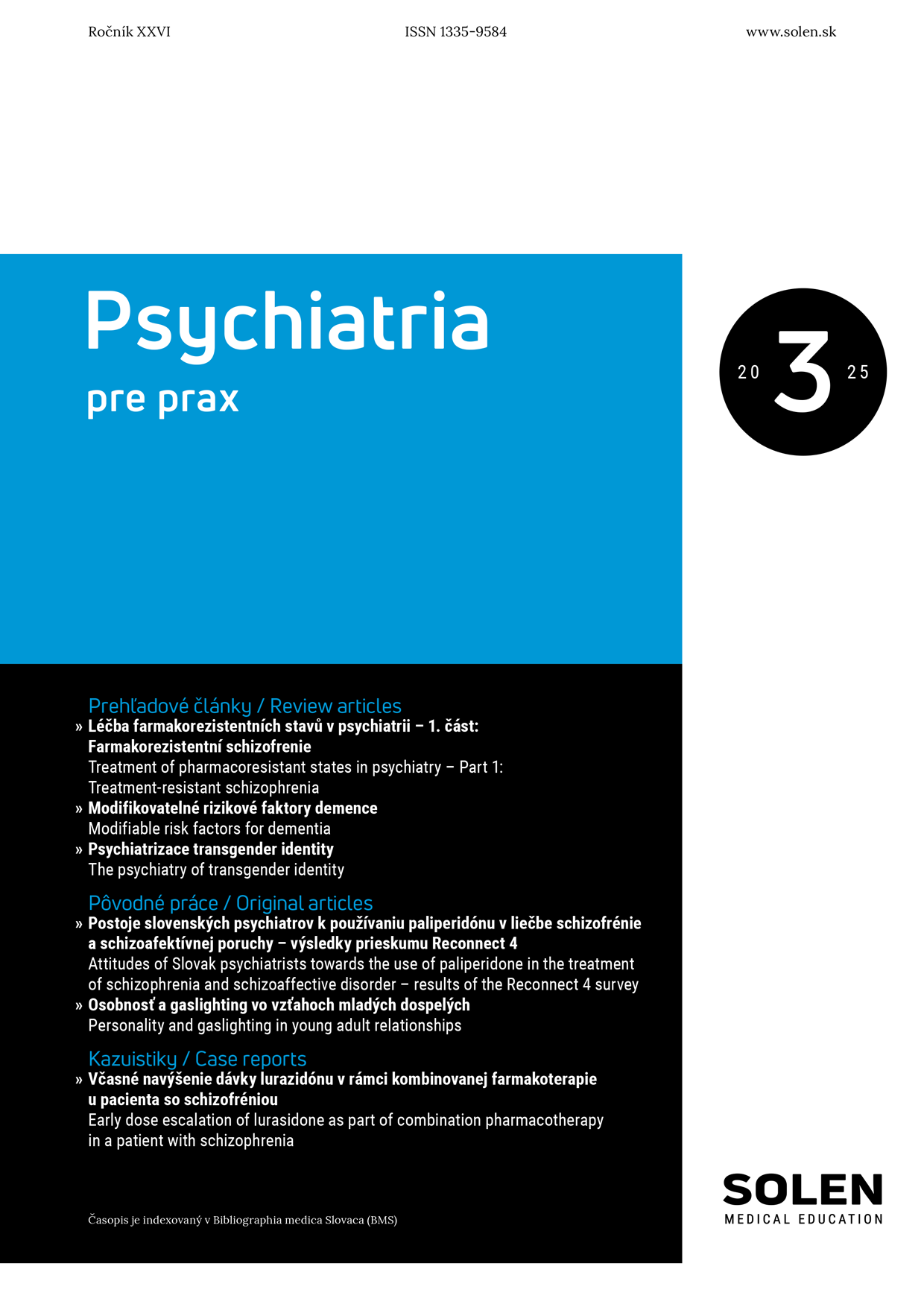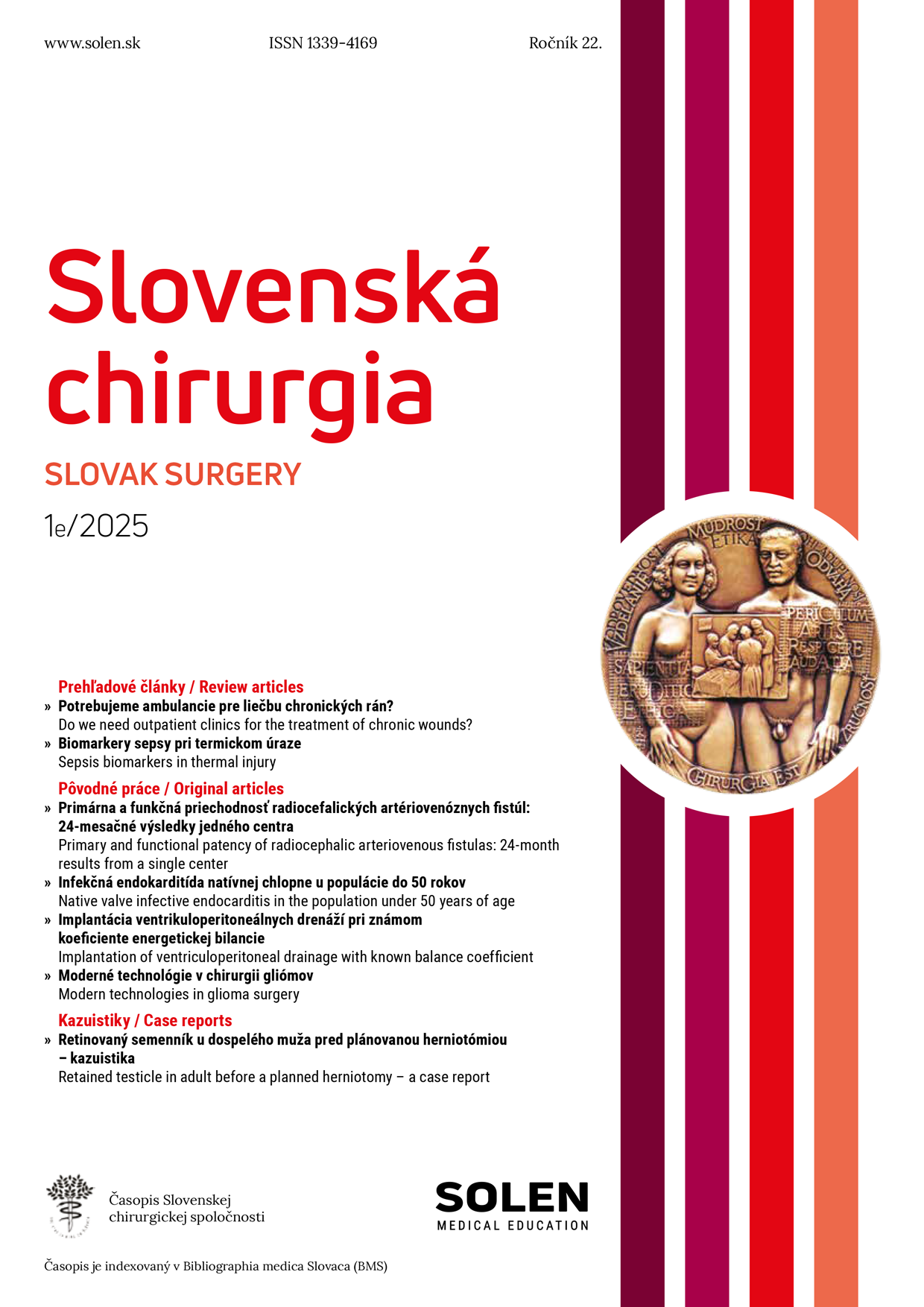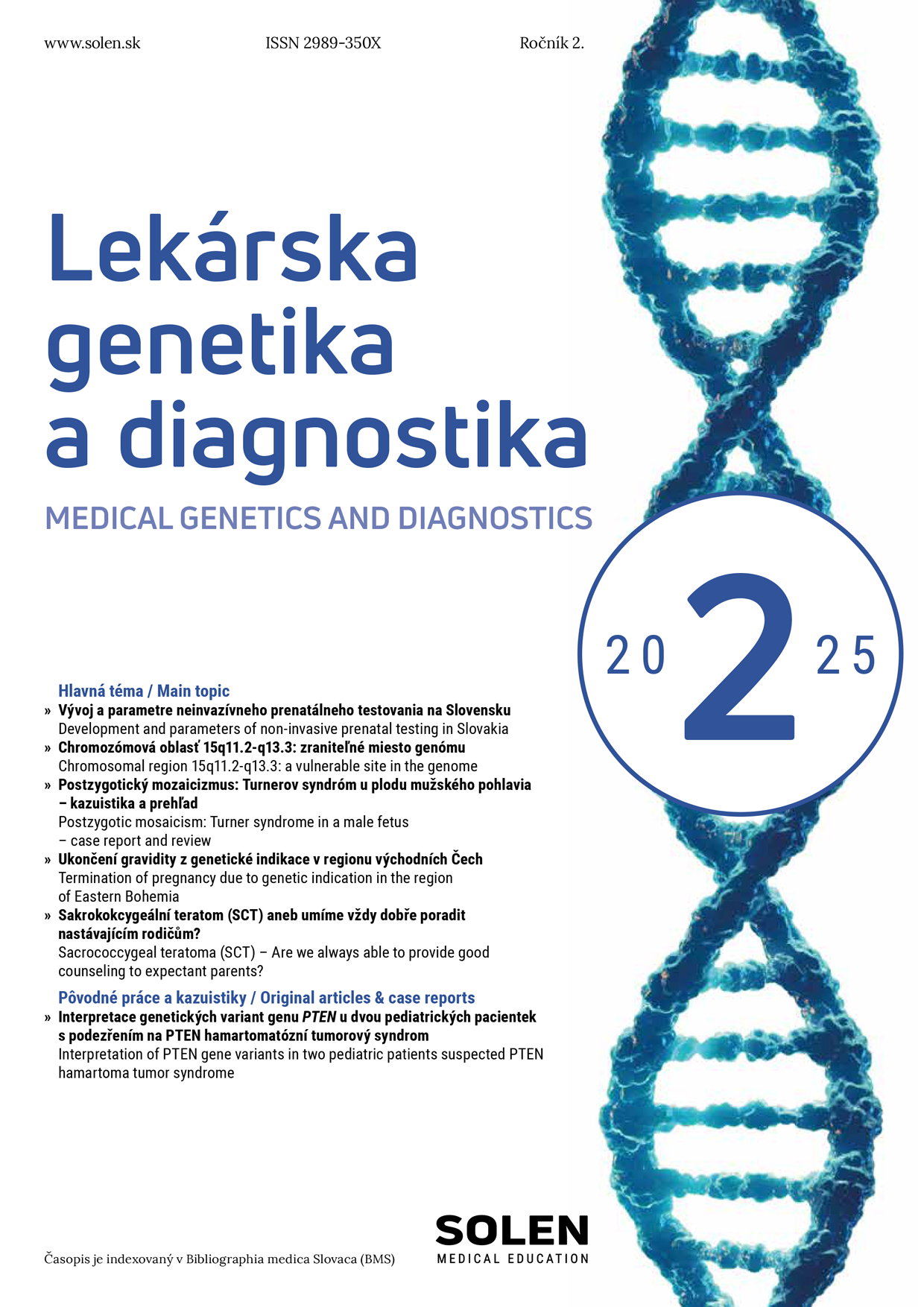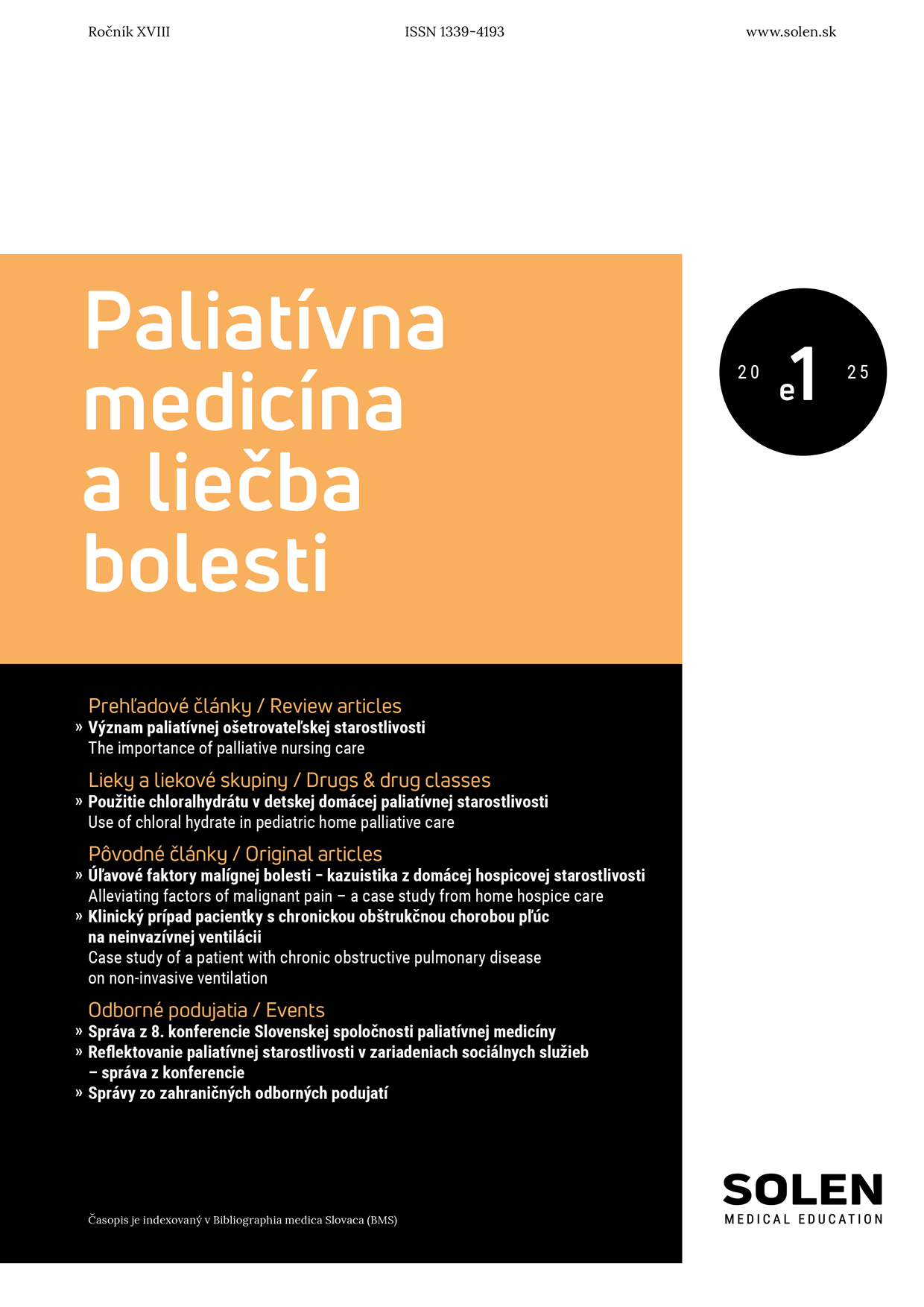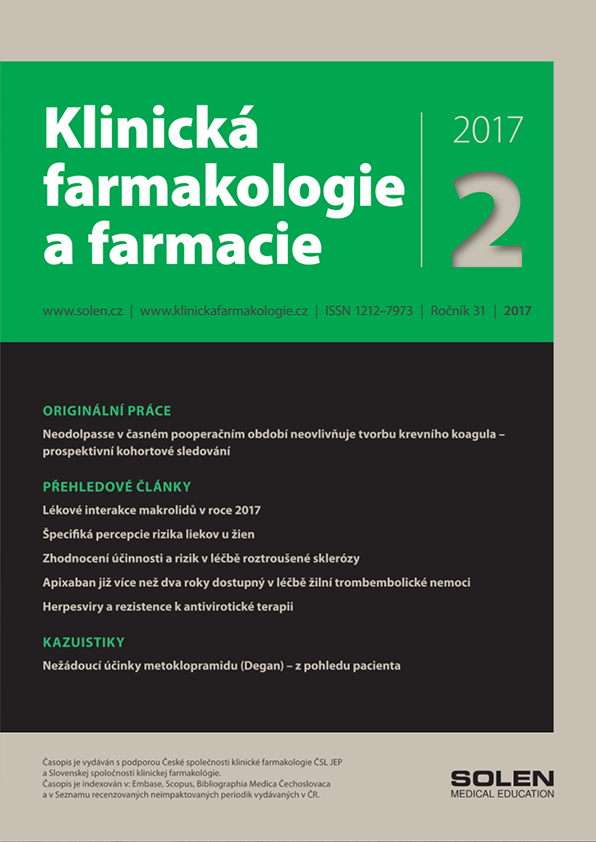Manuscript must be submitted in electronic format via email to: dostalova@solen.sk and redakcia@solen.sk. Submission of a printed manuscript is not required.
The Editorial team reserves the right to make minor stylistic adjustments to the text without consulting the author, who will be informed during the proofreading process. The editorial team also reserves the right to reject texts that do not align with the journal's concept or have not been approved through the peer review process. If necessary, the author's consent will be sought to shorten the manuscript. In case of any formal deficiencies, the manuscript will be returned to the author for revision.
The editors team reserve the right to self-manage the inclusion of unsolicited manuscripts that have passed the peer review process.
Given the journal's practical focus, manuscripts should be written in a clear manner, emphasizing the practical application of the provided information in clinical practice.
Authors and co-authors are required to familiarize themselves with the rules of publication ethics, available in full on the journal's website. When submitting an article for publication, the main author must send a written declaration to the editorial office stating that the entire authorial collective is aware of the publication ethics rules and that there are no impediments to publishing the article.
Legal relationships between the publisher and the author are governed by the provisions of the Copyright Act.
All solicited articles in the journal are honored.
Publication of articles accepted for publication is free of charge to the authors.
Editorial
Main topic - review articles on a specific topic
Review articles – comprehensive overview of current issues in the field of epidemiology, prevention, diagnosis and treatment of oncological diseases – max. of 9 pages including attachments and references.
In the case of extensive topics, it is possible, after consultation with the editorial team, to divide the manuscript into several parts.
Structure of a review article: abstract, key words, introduction, internal division into smaller sections or subsections, conclusion, references.
Please, write the article focus on its practical use for oncologists and specialists from other disciplines interested in oncology.
Original articles and case reports – practical experiences, own observations and specific treatment procedures presented in the form of a publication – max. of 7 pages, including attachments and references.
Structure of an original article: abstract, key words, introduction, material and methods or patient cohort and methods, results, discussion, conclusion, references.
Structure of a case report: abstract, key words, introduction, description of the individual case (case report), discussion, conclusion, references.
The article should include information on why the case report deserves publication.
Drugs and drug groups – current information on pharmacotherapy options in oncology (drug profiles of new molecules, expanded indications etc.) – max. of 5 pages
Structure of article: introduction, pharmacodynamics, pharmacokinetics, mechanism of action, toxicity, conclusion
Events – reports and observations from professional (domestic and international) oncology events - 3 – 4 pages
Information and comments – introduction of interesting projects, studies, observations from domestic and international professional literature, reports, comments…
- Title of an article in Slovak and English - up to 10 words, capturing the essence of the article
- Full name of the main author with titles, affiliation, complete address including phone and email contact
- Full names of co-authors with titles and their affiliations
- Summary of the submitted article in Slovak and English + at least 5 keywords in both languages.
The summary is prepared only for review articles, original papers or case reports, within a range of 200 - 300 words
Review articles: without breakdown
Original articles: the summary should be divided into sections: Purpose/Introduction; Materials and Methods or Patients and Methods, Results, Conclusion.
The main text is divided into sections: introduction, materials and methods/patients and methods, results, discussion, and conclusion.
The English summary should be divided and adapted to the nature of the article, just like in the Slovak language: Purpose; Materials and methods or Patients and methods; Results; Conclusion.
Case reports: the summary should be divided into sections: Objective/Introduction; Case; Conclusion.
The main text is divided into sections: introduction, case report, discussion and conclusion.
The English summary should follow the same format as the Slovak language. In case reports: Objective/Introduction, Case, Conclusion.
- Text + tables or graphs and images as separate appendices (either included at the end of the text or in separate files) in the best possible quality and in sufficient resolution, accompanied by accurate captions
Tables must be editable – Word, Excel format (not in bmp, jpg, etc. formats)
Considering that the journal is intended for Slovak readers – oncologists, all images, tables and graphs must be translated into Slovak!
- List of references – up to 20 citations, presented in round brackets and numbered chronologically in the text based on their first occurrence
The article should conclude with concise conclusions, recommendations, and procedures.
Priority will be given to papers that cite and reference articles published in the journal Onkológia.
- Font: Times New Roman, size 12, line spacing 1.5,
- The total number of pages depending on the type of contribution.
- Divide the article into smaller and more readable sections, and use subheadings and simple divisions if necessary. For original articles and case reports, adhere to the required structure described in manuscript requirements.
- All abbreviations must be explained at their first use.
- Parenthesis should always be round ().
- Domesticated foreign expressions should be written either in accordance with the rules of Slovak orthography or in their original Latin form.
- In the text, clearly indicate references to all graphical representations, tables, or charts, which should be created using MS Word or MS Excel.
- For all types of contributions (reviews, original articles, and case reports), please ensure that the text adheres to the general rules of formal Slovak language appropriate for professional publications. For instance, when describing a case in a case report, use complete sentences with full verbs, not in a bullet-point or list format as in laboratory test results. Texts intended for review must be grammatically and stylistically correct.
Bibliographic references in the text should be indicated by a number in round brackets and in the order they are first cited (not alphabetically). Subsequent references to the same source should be indicated by the same number as the first mention.
In the reference list at the end of the text, list up to 3 authors. If there are more than 3 authors, list the first 3 authors followed by the abbreviation „et al.”
When citing authors in the text (e.g., Culine et al. compared…), use the abbreviation „et al.” consistently throughout the text and in the reference list. Also, include a reference to the list or references after the cites author (e..g., Culine et. al. (15) compared…).
Avoid citing abstracts, unpublished observations, or personal communications. Prefer current citations (from the last 3 years).
The formatting of bibliographic references should follow the citation style used in the MEDLINE/PUBMED databases.
The editorial team recommends citing Slovak and Czech papers that address the specific issues. It is also highly recommended to include references to articles published in the journal Onkológia to enhance the professional level of this journal.
Examples of citation an article in the journal
- Gonsalves W, Ganti AK. Targeted anti-cancer therapy in the elderly. Crit Rev Oncol Hematol. 2011;78(3):227–42.
- Sternberg CN, Petrylak DP, Sartor O, et al. Multinational, double-blind, phase III study of prednisone and either satraplatin or placebo in patients with castrate-refractory prostate cancer progressing after prior chemotherapy: the SPARC trial. J Clin Oncol. 2009;27(32):5431.
Examples of citation an electronic article
- Wong KP, Lang BH. The role of prophylactic central neck dissection in differentiaded thyroid carcinoma: Issues and controversies [online]. J Oncol. 2011. Available from: <http://www.hindawi.com/journals/jo/2011/127929/>. Accessed June 18, 2011.
Examples of citation a monograph
- Prochotský A. Karcinóm hrubého čreva a konečníka. Bratislava, Slovakia: Litera Medica, 2006. 652 s.
- DeVita VT Jr, Lawrence TS, Rosenberg SA, et al. CANCER. Principles & Practice of Oncology. 9th ed. Philadelphia, PA: Lippincott Williams & Wilkins, 2011.
Examples of citation a book chapter or an article in the proceedings
- Nenutil R. Standardizace histopatologické diagnostiky kolorektálního karcinomu. In: Vyzula R, Žaloudík J, eds. Rakovina tlustého střeva a konečníku. Praha, Czech Republic: Maxdorf, 2007. 96–102 s.
- Enzinger FM, Weiss SW. Ischemic fasciitis (Atypical decubital fibroplasia). In: Sharon WW, John RG, eds. Soft Tissue Tumors. 4th ed. St. Louis, MO: Mosby, 2001. 276–278 p.
Acknowledgement
At the end of your article, you may include acknowledgements to grant agencies or other supporters of your manuscript.
Examples of phrasing for acknowledgements:
This article was supported by the grant from the Agency for Research and Development under contract No. APVV-0016-11 and the grant from Comenius University under contract No. UK/470/2012
This article was conducted with the support of the project funded by the European Union's Structural Funds. Project code: ITMS:26220220163.
You may also express gratitude to collaborators who are not listed as co-authors of the article.
- A portrait photograph of the author (if there are multiple co-authors, only the main author, or the author whose contact will be provided at the end of the article).
- A statement declaring that the article has not been published or offered for publication in any other journal.
- A statement confirming that the author and co-authors have familiarized themselves with the publication ethics guidelines (available in full on the journal's website) and that there are no obstacles to the publication of the article.
- A declaration of any potential conflicts of interest by the author.



